

Journal of Forensic Medicine ›› 2021, Vol. 37 ›› Issue (5): 615-620.DOI: 10.12116/j.issn.1004-5619.2020.400909
• Original Articles • Previous Articles Next Articles
Lan-qing CHEN1,2( ), Yu-ning WANG1, Dian-yi LI1, Lu-yao XU1, Lian-jie LI1, Ze-hao LI1, Hua LIU2, Qian LIU1(
), Yu-ning WANG1, Dian-yi LI1, Lu-yao XU1, Lian-jie LI1, Ze-hao LI1, Hua LIU2, Qian LIU1( )
)
Received:2020-09-27
Online:2021-10-25
Published:2021-10-28
Contact:
Qian LIU
CLC Number:
Lan-qing CHEN, Yu-ning WANG, Dian-yi LI, Lu-yao XU, Lian-jie LI, Ze-hao LI, Hua LIU, Qian LIU. Construction of a Stable Expression Cell Line of Human Phospholamban[J]. Journal of Forensic Medicine, 2021, 37(5): 615-620.
Add to citation manager EndNote|Ris|BibTeX
URL: http://www.fyxzz.cn/EN/10.12116/j.issn.1004-5619.2020.400909
| FITC | DAPI | FITC与DAPI重叠 | |
| 阴性对照组 |  | 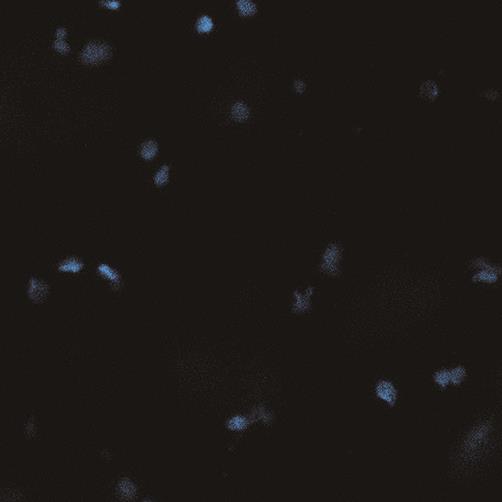 | 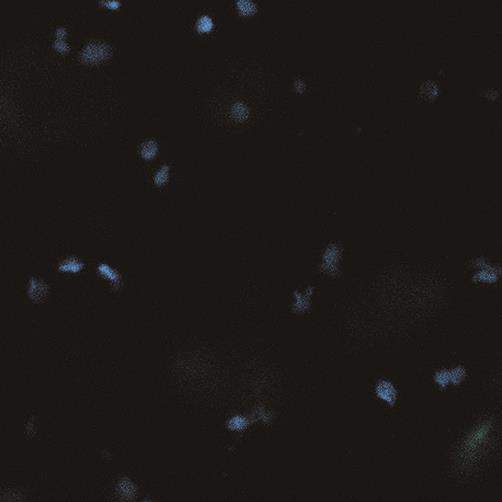 |
| 未加Dox诱导组 | 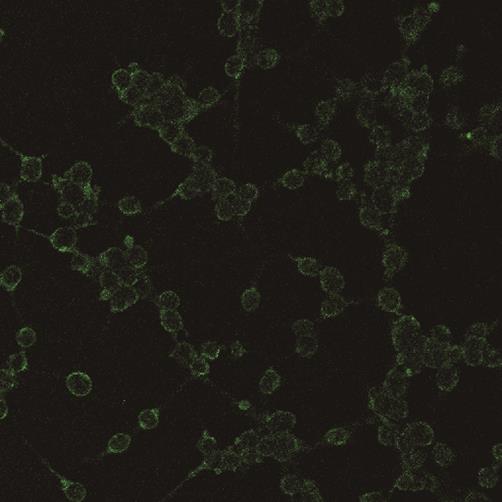 | 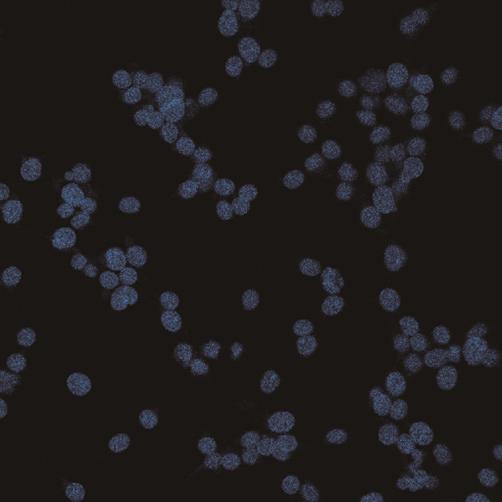 | 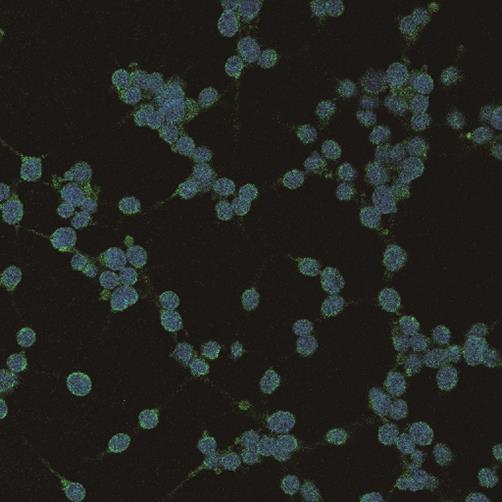 |
| 加入Dox诱导组 | 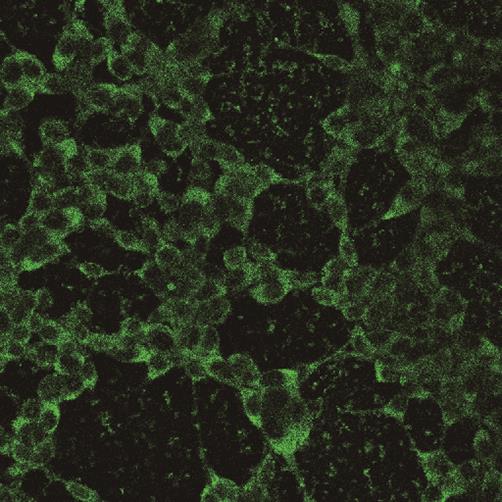 | 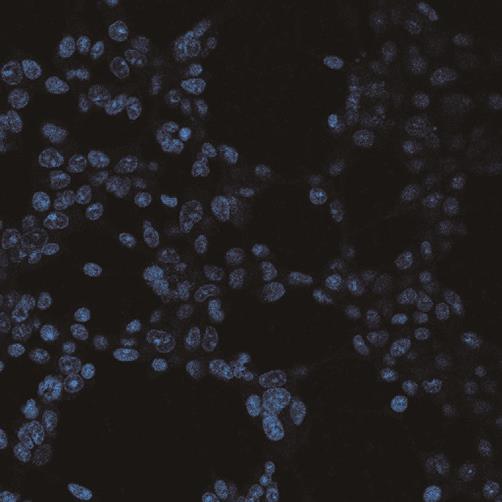 | 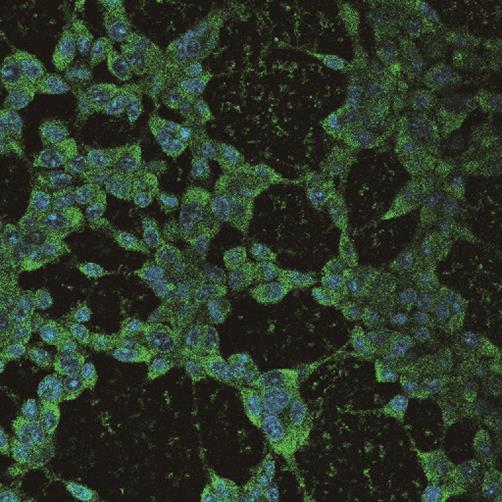 |
Fig. 2 Indirect immunofluorescence detection of PLN expression in hPLN-293 cells
| FITC | DAPI | FITC与DAPI重叠 | |
| 阴性对照组 |  |  |  |
| 未加Dox诱导组 |  |  |  |
| 加入Dox诱导组 |  |  |  |
| 组别 | 第1代细胞 | 第5代细胞 | 第10代细胞 | |||
|---|---|---|---|---|---|---|
| n | PLN相对表达量 | n | PLN相对表达量 | n | PLN相对表达量 | |
| 未加Dox诱导 | 2 | 0.24 | 3 | 0.29±0.23 | 3 | 0.21±0.09 |
| 加入Dox诱导 | 2 | 1.24 | 3 | 1.66±0.151) | 3 | 1.19±0.221) |
Tab. 1 Effects of Dox induction on the relative expression of PLN in hPLN-293 cells
| 组别 | 第1代细胞 | 第5代细胞 | 第10代细胞 | |||
|---|---|---|---|---|---|---|
| n | PLN相对表达量 | n | PLN相对表达量 | n | PLN相对表达量 | |
| 未加Dox诱导 | 2 | 0.24 | 3 | 0.29±0.23 | 3 | 0.21±0.09 |
| 加入Dox诱导 | 2 | 1.24 | 3 | 1.66±0.151) | 3 | 1.19±0.221) |
| 无毒组 | 染毒组 | |
| Thr17-P-PLN |  | |
| PLN |  | |
| GAPDH |  | |
Fig. 4 Effects of aconitine exposure on the phosphorylation level of Thr17 site of PLN in hPLN-293 cells detected by Western blot
| 无毒组 | 染毒组 | |
| Thr17-P-PLN |  | |
| PLN |  | |
| GAPDH |  | |
| 1 | 樊华,杨爱玲,王佑华,等. 扩心方对扩张型心肌病大鼠肌浆网Ca2+-ATP酶及受磷蛋白的影响[J].世界科学技术-中医药现代化,2018,20(2):233-238. doi:10.11842/wst.2018.02.015. |
| FAN H, YANG A L, WANG Y H, et al. Effect of Kuoxinfang on sarcoplasmic reticulum Ca2+-ATPase and phosphoprotein in rats with dilated cardiomyopathy[J]. Shijie Kexuejishu-Zhongyiyao Xiandaihua,2018,20(2):233-238. | |
| 2 | HAGHIGHI K, BIDWELL P, KRANIAS E G. Phospholamban interactome in cardiac contractility and survival: A new vision of an old friend[J]. J Mol Cell Cardiol,2014,77:160-167. doi:10.1016/j.yjmcc.2014.10.005. |
| 3 | 潘美辰,周小伟,刘艳,等. 乙醇-乌头碱致心律失常的毒理分子机制研究进展[J].法医学杂志,2020,36(1):115-119. doi:10.12116/j.issn.1004-5619.2020.01.022. |
| PAN M C, ZHOU X W, LIU Y, et al. Research progress on the molecular mechanisms of toxicology of ethanol-aconitine induced arrhythmia[J]. Fayixue Zazhi,2020,36(1):115-119. | |
| 4 | WADA K, YAMASHITA H. Cytotoxic effects of diterpenoid alkaloids against human cancer cells[J]. Molecules,2019,24(12):2317. doi:10.3390/molecules24122317. |
| 5 | 龚曼曼,孟麟,刘文斌,等. 四环素调控型猪鼻支原体蛋白P37表达细胞系的建立[J].北京大学学报(医学版),2005,37(6):575-578. doi:10.3321/j.issn:1671-167X.2005.06.003. |
| GONG M M, MENG L, LIU W B, et al. Establishment of a stable and regulable 293 cell line expressing mycoplasma hyorhinis protein P37[J]. Beijing Daxue Xuebao (Medical sciences),2005,37(6):575-578. | |
| 6 | Thermo Fisher Scientific. T-RExTM System[EB/OL]. (2011-11-08)[2020-09-27]. https://assets.thermofisher.cn/TFS-Assets/LSG/manuals/trexsystem_man.pdf. |
| 7 | LI C, WEN A, SHEN B, et al. FastCloning: A highly simplified,purification-free,sequence- and ligation-independent PCR cloning method[J]. BMC Biotechnol,2011,11:92. doi:10.1186/1472-6750-11-92. |
| 8 | 王卓,吕茂民,冯晶晶,等. 重组人凝血因子Ⅶ在Flp-In-CHO细胞中的表达及鉴定[J].中国生物制品学杂志,2010,23(3):248-251,255. |
| WANG Z, LÜ M M, FENG J J, et al. Expression of recombinant human coagulation factor Ⅶ in Flp-In-CHO cells and identification of expressed product[J]. Zhongguo Shengwuzhipinxue Zazhi,2010,23(3):248-251,255. | |
| 9 | 陈爱珺,郭建强,姚立红,等. 稳定表达流感病毒基质蛋白2的哺乳动物细胞系的建立[J].病毒学报,2013,29(1):7-11. |
| CHEN A J, GUO J Q, YAO L H, et al. Establishment of mammalia cell lines for constitutive expression of influenza virus matrix protein 2[J]. Bingdu Xuebao,2013,29(1):7-11. | |
| 10 | 李红艳,赵思涵,王世华,等. SERCA2a在心力衰竭中的研究进展[J].中国药理学通报,2020,36(2):171-174. doi:10.3969/j.issn.1001-1978.2020.02.006. |
| LI H Y, ZHAO S H, WANG S H, et al. Research progress of SERCA2a in heart failure[J]. Zhongguo Yaolixue Tongbao,2020,36(2):171-174. | |
| 11 | VITTONE L, MUNDINA-WEILENMANN C,SAID M, et al. Time course and mechanisms of phosphorylation of phospholamban residues in ischemia-reperfused rat hearts. Dissociation of phospholamban phosphorylation pathways[J]. J Mol Cell Cardiol,2002,34(1):39-50. doi:10.1006/jmcc.2001.1488. |
| 12 | 张大伟. 黄芪皂苷Ⅳ调节缺氧/复氧心肌细胞钙转运蛋白磷酸化的通路研究[D].南京:南京医科大学,2012. |
| ZHANG D W. The pathway study of astragaloside Ⅳ modulation of calcium handling protein phosphorylation on hypoxia/reoxygenation cardiomyocytes[D]. Nanjing: Nanjing Medical University,2012. | |
| 13 | 刘静. 银杏叶提取物对老化心肌细胞肌浆网钙转运蛋白修饰的细胞信号传导途径的影响[D].南京:南京医科大学,2011. |
| LIU J. A machanism study on the protective effects of Ginkgo biloba extract on cell signal transduction pathway of aging myocardial sarcoplasmic reticulum calcium transport protein modification[D]. Nanjing: Nanjing Medical University,2011. | |
| 14 | 张静宜,孙桂波,王敏,等. 三氧化二砷心脏毒性研究进展[J].中国药理学通报,2016,32(9):1194-1197,1198. doi:10.3969/j.issn.1001-1978.2016.09.003. |
| ZHANG J Y, SUN G B, WANG M, et al. Research advances on cardiac toxicity of arsenic trioxide[J]. Zhongguo Yaolixue Tongbao,2016,32(9):1194-1197,1198. | |
| 15 | 赵岚,杨烽华,张少衡. 肿瘤心脏病学及抗肿瘤药物的心脏毒性[J].生理科学进展,2017,48(3):197-202. |
| ZHAO L, YANG F H, ZHANG S H. Oncology cardiology and cardiotoxicity of antineoplastic drugs[J]. Shengli Kexue Jinzhan,2017,48(3):197-202. |
| [1] | Zhong-hua WANG, Shu-jin LI. Research Progress on Molecular Biology of Human Height Estimation [J]. Journal of Forensic Medicine, 2023, 39(5): 487-492. |
| [2] | Cui-mei LIU, Wei JIA, Chun-hui SONG, Zhen-hua QIAN, Zhen-dong HUA, Yue-meng CHEN. Qualitative and Quantitative Analysis of Five Indoles or Indazole Amide Synthetic Cannabinoids in Suspected E-Cigarette Oil by GC-MS [J]. Journal of Forensic Medicine, 2023, 39(5): 457-464. |
| [3] | Yong ZENG, Dong-hua ZOU, Ying FAN, Qing XU, Lu-yang TAO, Yi-jiu CHEN, Zheng-dong LI. Research Progress and Forensic Application of Human Vascular Finite Element Modeling and Biomechanics [J]. Journal of Forensic Medicine, 2023, 39(5): 471-477. |
| [4] | Wen-ya ZHAI, Li-na WU, Shuo YANG, Bao-hua SHEN, Yan SHI. Detection and Analysis of Blood Dexmedetomidine in Drug-Facilitated Cases [J]. Journal of Forensic Medicine, 2023, 39(5): 452-456. |
| [5] | Yu-xin SUN, Xiao-juan GONG, Xiu-li HAO, Yu-xin TIAN, Yi-ming CHEN, Bao ZHANG, Chun-xia YAN. Screening of Genes Co-Associated with Sudden Infant Death Syndrome and Infectious Sudden Death in Infancy and Bioinformatics Analysis of Their Regulatory Networks [J]. Journal of Forensic Medicine, 2023, 39(5): 433-440. |
| [6] | Yu YANG, Fan-zhang LEI, Yu-you DONG, Jian-long MA, Qi-qiang SHI, Xue-song YE. Retrospective Analysis of Death Cases of Oral Diphenidol Hydrochloride Poisoning [J]. Journal of Forensic Medicine, 2023, 39(4): 393-398. |
| [7] | Qing-qing XIANG, Li-fang CHEN, Qin SU, Yu-kun DU, Pei-yan LIANG, Xiao-dong KANG, He SHI, Qu-yi XU, Jian ZHAO, Chao LIU, Xiao-hui CHEN. Research Progress on Microbial Community Succession in the Postmortem Interval Estimation [J]. Journal of Forensic Medicine, 2023, 39(4): 399-405. |
| [8] | Qin SU, Qian-ling CHEN, Wei-bin WU, Qing-qing XIANG, Cheng-liang YANG, Dong-fang QIAO, Zhi-gang LI. Metabonomics Analysis of Brain Stem Tissue in Rats with Primary Brain Stem Injury Caused Death [J]. Journal of Forensic Medicine, 2023, 39(4): 373-381. |
| [9] | Xu-dong ZHANG, Yao-ru JIANG, Xin-rui LIANG, Tian TIAN, Qian-qian JIN, Xiao-hong ZHANG, Jie CAO, Qiu-xiang DU, Jun-hong SUN. Postmortem Interval Estimation Using Protein Chip Technology Combined with Multivariate Analysis Methods [J]. Journal of Forensic Medicine, 2023, 39(2): 115-120. |
| [10] | Wu LONG, Peng-fei QU, Lin MA, Rui WANG, Yan-mei XI, Yu-hua LI, Sheng-jie NIE, Ting DUAN, Jin-liang DU, Xue TANG, Jing-feng ZHAO, Pu-ping LEI, Yue-bing WANG. Cytotoxicity of 4 Wild Mushrooms in a Case of Yunnan Sudden Unexplained Death [J]. Journal of Forensic Medicine, 2023, 39(2): 121-128. |
| [11] | Jun-wei GAO, Yang LU, Yan-jun LI, Dong-hua ZOU, Guang-long HE, Yan-bin WANG. Survey on the Construction Status of Forensic Virtual Autopsy Laboratory and the Applicability of Laboratory Accreditation [J]. Journal of Forensic Medicine, 2023, 39(2): 186-192. |
| [12] | Fang-Fang LIU, Hui WU, Wei WANG, Ying XIE. Changes of 1,5-AG in Vitreous Humor of Rabbit Cadavers with Hyperglycemic Metabolism [J]. Journal of Forensic Medicine, 2023, 39(1): 13-17. |
| [13] | Zhi-ling TIAN, Ruo-lin WANG, Jian-hua ZHANG, Ping HUANG, Zhi-qiang QIN, Zheng-dong LI, He-wen DONG, Dong-hua ZOU, Mao-wen WANG, Zhuo LI, Lei WAN, Xiao-tian YU, Ning-guo LIU. Comparison of CT Values between Thrombus and Postmortem Clot Based on Cadaveric Pulmonary Angiography [J]. Journal of Forensic Medicine, 2023, 39(1): 7-12. |
| [14] | Jia-yi WU, You-jia YU, Kai LI, Xin YIN, Han-ting FAN, Rong LI, Zhi-wei ZHANG, Wei TANG, Hui-jie HUANG, Feng CHEN. Report on Cardiac Gross Pathologic Measurements of Sudden Cardiac Death in Adults [J]. Journal of Forensic Medicine, 2023, 39(1): 1-6. |
| [15] | Hui WU, Fang-fang LIU, Jun-da WU, Ying XIE. Research Progress on Estimation of Postmortem Interval Based on Ocular Tissues Structure [J]. Journal of Forensic Medicine, 2023, 39(1): 50-56. |
| Viewed | ||||||
|
Full text |
|
|||||
|
Abstract |
|
|||||